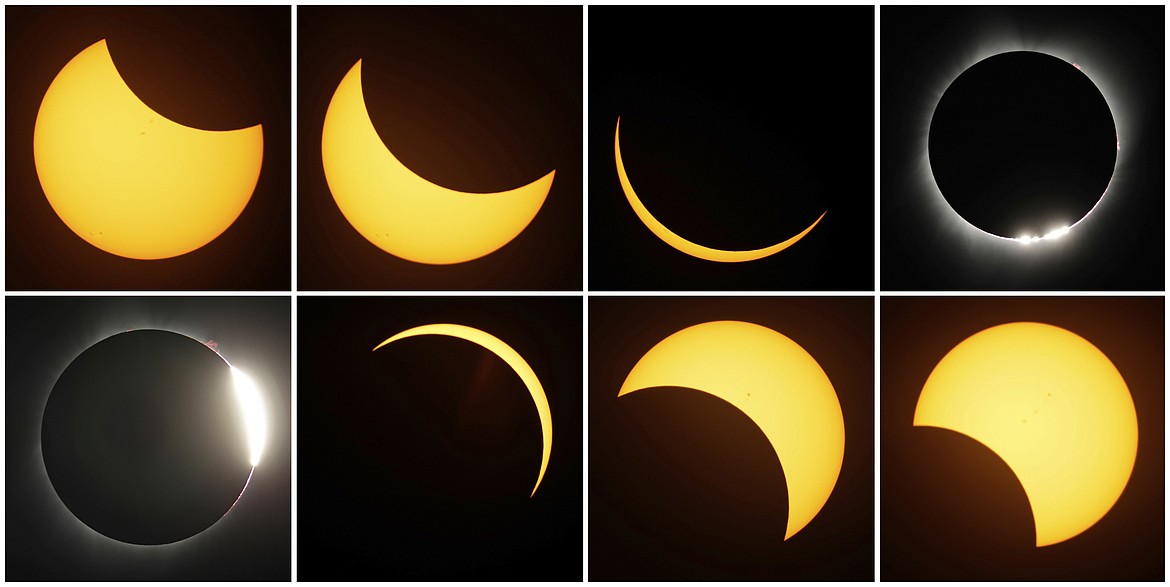North Idaho could see partial solar eclipse
North Idahoans may get a glimpse of Monday's solar eclipse.
Weather permitting, tens of millions who live along a narrow stretch from Mexico's Pacific coast to eastern Canada can just look skyward Monday to glimpse day turn to twilight when the moon blots out the sun.
According to timeanddate.com, North Idaho will have a partial solar eclipse that could be visible late morning to early afternoon.
The website reported that Sandpoint will have a 27.03% solar eclipse starting at 10:41 a.m. with a maximum at just before 11:37 and ending at 12:33 p.m. In Bonners Ferry, the partial solar eclipse will begin at 10:43 a.m. with maximum at 11:38 and ending at 12:34 p.m. It reported that Coeur d'Alene and Post Falls will have a 27.63% solar eclipse starting at 10:40 a.m. with a maximum at 11:35 a.m. and ending at 12:33 p.m.
Areas of Idaho with a more visible solar eclipse, according to timeanddate.com, include Pocatello, which should have a totality of 43%, and Idaho Falls, at 42%.
A problem, however, could be the weather. Monday's forecast calls for cloudy conditions, with rain and snow likely, but there could be some clearings.
Eclipse glasses are a must to prevent eye damage. The only time it's safe to ditch protective glasses is during totality, or the few minutes of complete darkness.
Here are some alternatives if you're clouded out during the eclipse or if you can't travel to the path:
NASA is offering several hours of streaming online and on NASA TV starting at 1 p.m. EDT from several cities along the totality path. The space agency will show telescope views of the sun and there will be appearances by scientists and space station astronauts. During the eclipse, small rockets will blast off from Wallops Island, Virginia, with science instruments into the electrically charged portion of the atmosphere near the edge of space known as the ionosphere.
Associated Press journalists will fan out along the path of totality to bring live coverage of watch parties and festivities. The AP live stream will start at 10 a.m. EDT with views from Mazatlán, Mexico, and other locations. Commentary will run from 1:30 to 3:30 p.m. EDT featuring interviews with organizers, scientists, and live views from along the path.
Telescopes and experiments focus on the sun
The Exploratorium museum will feature live telescope images of the sun from Junction, Texas, and Torreón, Mexico. Researchers and students from the University of Maine will launch high-altitude balloons in an experiment that will be live streamed from the stratosphere. Time and Date will show the sun from different telescope feeds.
The next eclipse in Idaho is projected to be a partial lunar eclipse Sept. 18.

